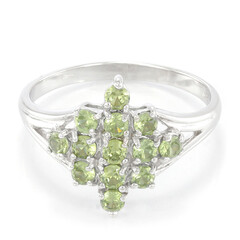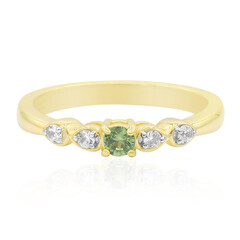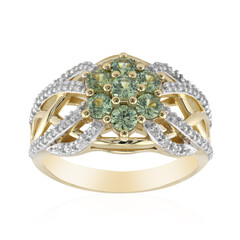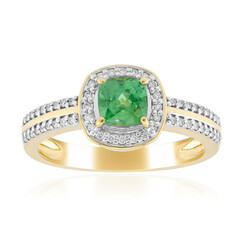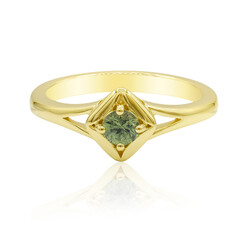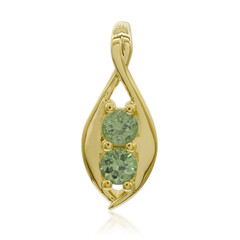Demantoid
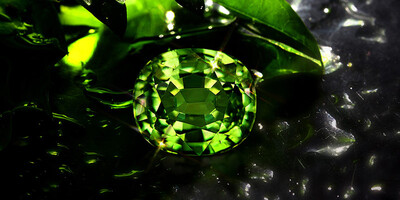
1. Introduction
The fire gave it its name: "demantoid" is based on the old German "demant" for "diamond-like" and refers to the famous fire ("dispersion") of this yellow-green garnet.
2. Name, Origin and History
Name
The fire gave it its name: "demantoid" is based on the old German "demant" for "diamond-like" and refers to the famous fire ("dispersion") of this yellow-green garnet.
Origin
The original source of demantoids is located in the Russian central Ural Mountains. Russian specimens are traded on the market as the most expensive demantoids due to their rarity. Juwelo obtains its specimens from Namibia and Madagascar. 20 km north-east of Ambanja, for example, the well-known Ambanja demantoids are extracted.
History
The demantoid only joined the wide world of gemstones comparatively late: it was first found in the Russian Ural Mountains in 1855. Like so many other gemstones, the demantoid was initially confused with different varieties: it was initially recognised as "Siberian chrysolite" ("chrysolite" is a synonym for peridot) or "Ural emerald". It was only around 1870 that the garnet received its own name and a certain degree of recognition: the highly esteemed Russian jeweller Carl Peter Fabergé also used the demantoid for his coveted works.
3. Characteristics and Colour
Characteristics
It is said that the fire of the demantoid outshines even that of the diamond. And indeed: the fire of the demantoid is stated to be 0.057. For diamonds it is only 0.044 (BG dispersion, here the refraction of long-wave red light and the refraction of short-wave ultraviolet light are compared).
The demantoid shows red, orange, yellow, green, blue or even violet flashes in its transparent gemstone body. The colour palette of the demantoid ranges from a radiant green (forest green) and yellowish green tones (grass green) to yellow-green (savannah or canary green), although bluish and greyish green tones are sometimes also found in Africa.
Colour
The demantoid (calcium iron silicate) belongs to the large family of garnet (group of silicates): This well-known mineral family comprises a colour range of more than 38 shades. The secret of the variety of colours lies in the chemical structure of garnets. Their crystal structure contains a whole range of different elements (aluminium, calcium, chromium, iron, magnesium, manganese, oxygen, silicon, titanium, vanadium, zirconium) - the combination of these creates the richness of colour of this gemstone family. The shades of green differ depending on their occurrence. Iron is responsible for the yellow colour in andradite, but when iron is replaced by chromium (the element that gives so many gemstones their characteristic hues), different shades of green are created.
Incidentally, all garnets have exceptional colour stability, which is why colour treatments are unnecessary.
4. Varieties
Juwelo offers you demantoids from Namibia and Madagascar. Russian demantoids from the original source are very rare on the market.
5. Treatment and Care
Demantoids should not be subjected to steam or ultrasonic cleaning. Extreme temperature fluctuations can damage some specimens.

